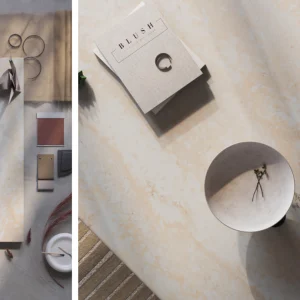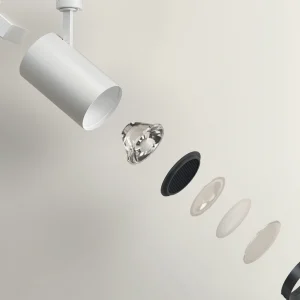The major components of the new Integrated Science Complex at the College of the Holy Cross have earned LEED-Gold certification by the U.S. Green Building Council (USGBC). It is the first LEED Gold-certified project on campus.
Regarded as the most ambitious construction project in the college’s history, the $64 million complex consists of the Park B. and Linda Smith Laboratories, a new four-storey building that links to the existing science and social science buildings on campus.
The design team has connected the renovated Haberlin with Beaven, O’Neil, and Swords Halls to the new Smith Labs to create a state-of-the-art teaching and research complex for Chemistry, Physics and Mathematics. New and renovated atria create an open and inviting feeling and give the complex a connective spine, visually uniting three levels of entryways. Transparent walls and strategic adjacencies put science on display for all to see. A variety of gathering places provide opportunities for study, casual conversation, and effective intellectual collisions across disciplines.
Designed by the architectural firm of EYP Architecture & Engineering, and constructed by BOND, the Smith Labs construction and Haberlin renovation were conceived with the highest standards of energy efficiency and innovative environmentally-friendly elements, including an energy recovery wheel that captures and reuses heat and humidity from air.
The Integrated Science Complex includes numerous features that produce an energy savings of more than 52% in cooling and 39% in heating, lowering total energy consumption by more than 31% over industry standard baseline. Other energy-efficient and sustainability features include: an active display monitor in the atrium lobby, allowing students and visitors to view the complex’s energy consumption readings and understand how the buildings’s technologies correlate to carbon savings; a low-flow fume hood system, integrating variable air volume exhaust valves into research laboratories; a high-performance lighting system, incorporating high-efficiency fixtures for additional energy savings; nearly 40% of the total building materials manufactured using recycled materials; and 56% of the total building materials extracted, processed and manufactured within 500 miles of the project site.
Earlier this year, the Integrated Science Complex won a Boston Society of Architects (BSA) Honor Award for Design Excellence. Also under construction on campus is a new 156-bed townhouse-style residence hall. At the projected cost of $20 million, the residence hall incorporates high energy efficiency standards in all phases of design and construction, and will seek LEED certification upon its completion this summer. As part of the college’s participation in the American College and University Presidents Climate Commitment (ACUPCC), all new construction going forward on campus will be energy-efficient and meet or exceed LEED silver standards.
Holy Cross’ plan calls for a 20% reduction in carbon emissions by 2015 and to reach climate neutrality by or before 2040, which is consistent with long range goals set on a global scale.





